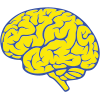Front Psychiatry. 2025 Feb 13;16:1493888. doi: 10.3389/fpsyt.2025.1493888. eCollection 2025.
ABSTRACT
BACKGROUND AND AIMS: Internet addiction (IA) and depression commonly co-occur in adolescents, yet the mechanisms underlying their comorbidity remain unclear. This study aims to elucidate the comorbidity mechanism through network analysis, identifying bridge symptoms linking IA and depression, and exploring sex differences. Additionally, the study examines the association between effortful control (EC) and bridge symptoms, providing insights for interventions.
METHODS: A school-based survey was conducted among 7th to 9th-grade students in Japan. Participants completed questionnaires assessing IA (measured by the Young Diagnostic Questionnaire), depression (measured by the Patient Health Questionnaire for Adolescents), and EC (measured by the Early Adolescent Temperament Questionnaire). Network analysis was employed to identify bridge symptoms and examine their association with EC. Bootstrapping for network analysis was conducted to assess network accuracy and stability as well as sex differences in the network structures.
RESULTS: Among the 4,111 students approached, 3,909 (1,904 male and 2,005 female) students filled out the survey. Bridge symptoms such as “Escape” (from the IA cluster) and “Concentration” (from the depression cluster) were found important in both male and female students. Our analysis also revealed differences in the importance of the bridge symptoms across males and females with “Psychomotor” symptoms (from the depression cluster) predominantly in males and “Feeling Guilty” (from the depression cluster) and “Functional impairment” (from the IA cluster) predominantly in females. EC showed a notable negative association with “Concentration”, suggesting important relationships between the transdiagnostic factor and bridge symptoms in understanding the comorbid conditions. The network comparison test did not reveal significant differences in the network structures across sexes.
DISCUSSION AND CONCLUSIONS: The study revealed differences in bridge symptoms linking IA and depression between male and female students. Our findings provide valuable insights for understanding the comorbidity mechanisms of IA and depression in adolescents. Further research using a longitudinal study design is warranted to identify the directionality between EC and bridge symptoms.
PMID:40018688 | PMC:PMC11866057 | DOI:10.3389/fpsyt.2025.1493888

Recent Comments